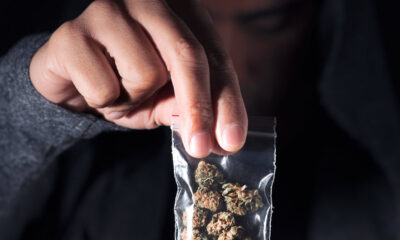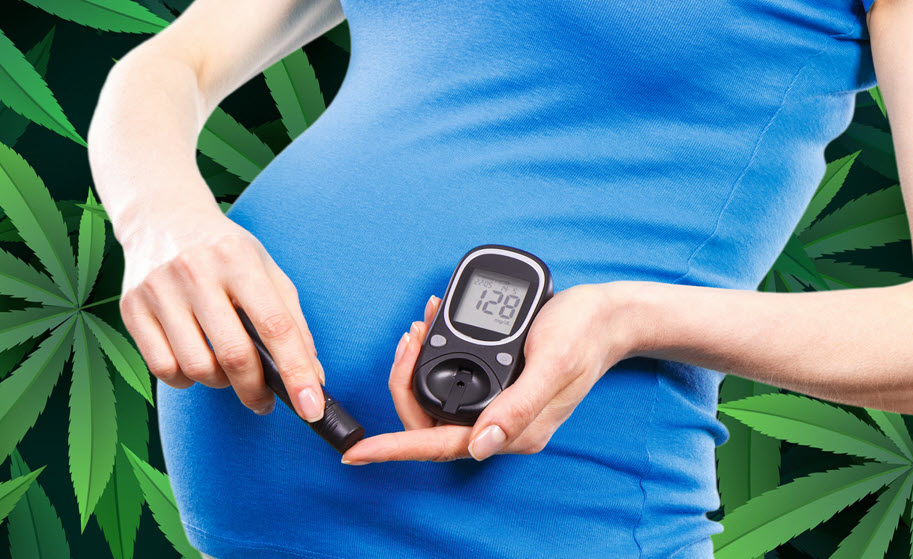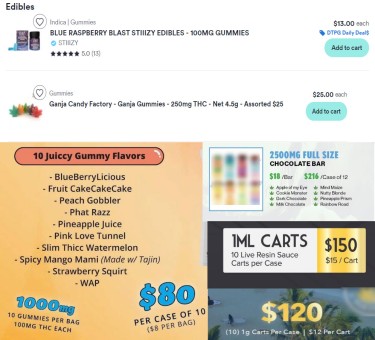Cannabis News
DeSantis Goes Anti-Pot Legalization – Who Controls His Wallet and His Vote?
Published
11 months agoon
By
admin

Who owns the President’s Wallet? Why DeSantis is another cog in the system…
This 2024, Americans will be clenching their anuses as they decide which master will be dictating their collective shitfuckery for the next 4 years.
The obvious two current front-runners are Joe Biden and Donald Trump – both options I have covered extensively as mere puppets to the true masters, or as Carlin would call them, “The owners in their special club” (and you ain’t in it!)
Today I’m not talking about Old man Dementia and Pussy L’Grabs, I’m talking the young buck Ronny DeSantis who – during the pandemic – seemed to be one of the few politicians that went against the grain.
Not only is he much younger than the relics that run against him, he also has a very strong ability to debate, make a point, and overall impose that “he is ready!”
Some people hate him – Donald Trump is one of those people, who have been working on trying to discredit him from being the Republican nominee. However, as an anarchist in my heart of hearts – I hate all politicians equally.
My only real interest in the political arena is looking at which president or political leader will give people more freedom, to undo the policy snares upheld by “elected representatives” for decades. I don’t care if they are “conservative” or “liberal”, all they need to show me is;
-
Not owned by anyone (zero candidates)
-
Advocates more freedom, not less
Obviously, with a name like Reginald Reefer – we need to look at where each candidate stands on weed. We know Biden says good things, but continues to play the old game of bureaucratic shuffle-cups, where the responsibility moves from one department to another, to another – and only when an important speech or vote comes up, they enact a policy change that affects zero people but seems like a grand gesture.
Trump was mostly “hands off” on a State’s level – however, federally his, “I want to cut budgets”, undid protections for the legal cannabis market. This put back the legalization of cannabis for years, because now bureaucrats will have to “vote on voting about a vote to vote on cannabis reform.”
Now when asked, Marijuana Moment reports that when DeSantis was asked about cannabis decriminalization on a federal level, he said he probably wouldn’t and continued to echo the same drug war excuses;
“I think that we have we have too many people using drugs in this country right now. I think it hurts our workforce readiness. I think it hurts people’s ability to prosper in life,” he said, adding that people he knew in high school who used marijuana “suffered.”
“All their activities, all their grades and everything like that—so particularly for the youth, I just think we have to be united,” the candidate said. He also plugged a Florida program overseen by his wife that involves sending athletes to schools to warn students about “the stakes of using some of these drugs nowadays, and this is not something you want to mess around with.”
Oh no, “Overseen by his wife” is eerily reminiscent of Nancy Raegan’s bullshit D.A.R.E program. But as you can see, “we have too many people using drugs in the country right now…”
Does that mean when fewer younger people are using drugs, he’d be open to it? No, of course not! It means, that there is some magical threshold of users that equates “too much” however, alcohol is not even considered as a “drug” within the rhetoric of DeSantis. We won’t legalize cannabis – which the youth can get irrespective of whether it’s legal or not – and rather, continue to utilize a system that literally turns people into slaves for “breaking the law”.
He “believes” it hurts workforce readiness and people’s ability to prosper…well, that is irrelevant. People’s right to choose what they can and cannot put into their own bodies is a sacred right of liberty – the same rights that the United States bled for in several wars to preserve.
But then you have politicians like DeSantis that pisses on those rights under the guise of “protecting others”.
Well first of all, it’s not the responsibility of the government to decide what a free human can eat or drink. That, if the human is actually free – is a responsibility that should solely lie within the decision making of the individual.
“So particularly for the youth…I’m keeping it illegal!” Well, it’s not legal for the youth…just like alcohol isn’t legal for the youth. Alcohol is legal, but the legality of it isn’t saying, “Hey kids, drink this!” it’s saying, “This is an adult beverage not meant for children!”
The fact that some kids drink alcohol does not justify making it illegal for the millions of adults that do drink alcohol. Similarly, because “some kids” could smoke weed – does not mean that we must make it illegal for everyone.
Some people can’t drive worth shit – does that mean we make cars illegal for everyone? Some people murder people using guns – do we ban all guns?
This argument is as old as prohibition itself, and it’s a weak argument.
My guess is that DeSantis has donors who make money or maintain some sort of power by sustaining cannabis prohibition. If you have been paying attention to the “BlackRock” hashtag that was circulating on Twitter the other day, you’ll realize that “Those who control the wallet of the president, controls the president…”
According to OpenSecrets, 76% of his funding comes from PAC Contributions and Large Individual Contributions. Now I’m not going to go down the list of all his donors at this moment to figure out who stands to gain the most – but I’ll leave it out in the open for you.
If you thought DeSantis was going to be your salvation – take a moment, reflect…maybe “nobody” is the best leader for you!
DESANTIS ON WEED, READ ON…
You may like
-


Cannabis Rescheduling Takes The Next Steps
-


BREAKING NEWS: DEA Issues Notice of Proposed Rulemaking to Move Marijuana to Schedule III
-


Slovakia And Cannabis
-


The Illegal Cannabis Market in America is Still 3x Bigger Than the Legal Marijuana Market
-


Can Taking CBD While Pregnant Cause Glucose Intolerance in Male Offspring But Not Female Children?
-


AI is making cannabis cultivation smarter
Cannabis News
BREAKING NEWS: DEA Issues Notice of Proposed Rulemaking to Move Marijuana to Schedule III
Published
8 hours agoon
May 16, 2024By
admin
Today is another historic day in the history of cannabis control and regulation. In a much anticipated announcement, the Drug Enforcement Administration (DEA) issued a notice of proposed rulemaking to reschedule marijuana, from Controlled Substances Act (CSA) schedule I to schedule III (the “Proposed Rule”).
We have covered the implications of a Schedule III placement in various posts on this blog, beginning with the Health and Human Services (HHS) recommendation that DEA undertake this rescheduling last August. See:
For now, here are a couple of high-level observations on today’s Proposed Rule.
First, DEA is not proposing an interim final rule. We expected as much, but it would have been nice! Under an interim final rule, an agency finds that it has good cause to issue a final rule without first publishing a proposed rule (as DEA did here). An interim final rule would have gone effect immediately upon publication, and marijuana would have been moved to schedule III today. Instead we’ll have to wait.
Second, the Proposed Rule gives a standard 60-day comment period, from the date the Proposed Rule is published in the Federal Register. That’s a pretty standard window; although, as I’ve explained before, this can always be extended.
Third, the Proposed Rule is clear that “any drugs containing a substance within the CSA’s definition of ‘marijuana’ would also remain subject to the applicable prohibitions in the Federal Food, Drug, and Cosmetic Act (“FDCA”).” No, this does not mean FDA enforcement is going to begin; and no, this does not mean Big Pharma is coming to squash state licensed operators. Stop saying that.
Fourth, the Proposed Rule gives very specific protocols for submitting electronic and other types of comments. These protocols are not hard to follow! But if you fail to do so, your comment will not make it into the record, and it will not be considered by DEA.
Fifth, I really like this paragraph:
HHS recommended in August 2023 that marijuana be rescheduled to schedule III. See Letter for Anne Milgram, Administrator, DEA, from Rachel L. Levine, M.D., Assistant Secretary for Health, HHS (Aug. 29, 2023) (“August 2023 Letter”). The Attorney General then sought the legal advice of the Office of Legal Counsel (“OLC”) at DOJ on questions relevant to this rulemaking proceeding. Among other conclusions, OLC concluded that “HHS’s scientific and medical determinations must be binding until issuance of a notice of proposed rulemaking [(‘NPRM’)].” Questions Related to the Potential Rescheduling of Marijuana, 45 Op. O.L.C. __, at *25 (Apr. 11, 2024) (“OLC Op.”).1 After the issuance of a notice of rulemaking proceedings, HHS’s scientific and medical determinations are accorded “significant deference” through the rest of the rulemaking process.2 OLC Op. at *26.
I’ve always argued that HHS’s scientific and medical determinations are binding under the plain language of the CSA itself. But it’s awfully nice to hear confirmation that OLC agreed– especially because there was some consternation among the cognoscenti about what OLC was doing here. It seems that OLC has essentially confirmed to DEA: “you are stuck with Schedule III.”
Sixth, it’s interesting to see the Proposed Rule delve into problematic international law constraints. The Proposed Rule gives a rather cursory analysis here, but OLC seems to have justified marijuana’s placement on Schedule III in the context of public international law obligations, including the 1961 U.N. Singled Convention on Narcotic Drugs (to which the United States is a party). DEA states, however, at Proposed Rule page 86 that:
“[c]oncurrent with this rulemaking, DEA will consider the marijuana-specific controls that would be necessary to meet U.S. obligations under the Single Convention and the Convention on Psychotropic Substances in the event that marijuana is rescheduled to schedule III, and, to the extent they are needed if marijuana is rescheduled, will seek to finalize any such regulations as soon as possible.”
This could get pretty interesting! Expect a lot of fretting here by industry and the general public.
Seventh, it was also interesting to see DEA and HHS justify why it arrived at a Schedule III conclusion, after concluding in 2016 that marijuana should stay in schedule I. I have wondered aloud about the intellectual gymnastics that might be required for this. Take a read at the rationale on the Proposed Rule at pages 11 – 13 and see if you’re convinced.
_____
OK, that’s it for now. The Proposed Rule is 92 pages and I had less than 30 minutes to read it and write this today. We will follow up as soon as next week with further thoughts on this very significant development.
Cannabis News
The Illegal Cannabis Market in America is Still 3x Bigger Than the Legal Marijuana Market
Published
14 hours agoon
May 16, 2024By
admin

In 2022, illicit cannabis sales soared to over $74 billion, surpassing the legal market’s $28 billion by a remarkable 164%, according to the latest report from New Frontier Data on American cannabis consumers. This significant disparity highlights potential opportunities for legal businesses to attract frequent users who currently depend on unregulated sources, as well as the millions of adults interested in cannabis but hesitant to try it.
Canada has a similar problem, as only 20% of the legally grown cannabis get sold to customers on the legal market.
To delve into the issues contributing to the industry’s multi-billion-dollar challenge, New Frontier Data surveyed over 5,500 U.S. adults from various market segments. Conducted in the first quarter of 2023, this demographically representative survey includes consumers who obtain cannabis through a wide range of sources.
Snapshot of U.S. Cannabis Consumers
-
42% of U.S. consumers obtain cannabis from state-regulated markets.
-
34% live in adult-use markets.
-
8% are registered patients in medical-only markets.
-
24% have access to state-legal cannabis but do not primarily use licensed retailers.
-
17% live in adult-use markets but obtain cannabis from friends, family, or illicit dealers.
-
7% live in medical-only markets but do not participate in their state’s medical program.
-
34% do not have adequate access to legal cannabis in their state and would require policy reform to use licensed markets.
-
23% live in states where cannabis is illegal.
-
11% are non-medical consumers in medical-only states.
Converting Illicit Consumers to Retail Customers
While most dispensaries compete with each other to serve the same group of committed legal market customers, significant opportunities exist outside this current customer pool. New Frontier Data’s research identifies four key barriers that must be overcome to attract frequent gray-market consumers into licensed dispensary shoppers.
Accessibility
Accessibility is a major barrier for frequent gray-market consumers, who disproportionately live in urban areas and may lack convenient transportation to licensed dispensaries. Similarly, those sourcing from friends and family often do not live near a dispensary. Overcoming this barrier requires businesses to work with local regulators to change zoning ordinances and expand delivery coverage areas. For example, in locations with a high population of senior citizens, like Leisure World in Seal Beach, California, local dispensaries offer shuttle services to bring customers to the store, addressing transportation challenges and fostering loyalty.
By addressing these barriers—price, product variety, product quality, and accessibility—licensed retailers can effectively convert gray-market consumers into loyal customers, expanding their reach beyond the current legal market clientele.
Product Quality
Quality is another crucial factor. Much of the illicit cannabis sold in the U.S. is high-quality flower grown in California. To compete with the gray market, retailers in every legal market must offer in-demand strains with quality that meets or exceeds what is available from California farms. This is especially important for consumers with higher tolerances and experienced palates. Ensuring quality and freshness can help attract frequent users who often source from friends and family.
Product Variety
A key differentiator for legal dispensaries is their range of manufactured, non-flower products. Even in adult-use states, fewer than half of surveyed consumers reported access to anything beyond flower, pre-rolls, and edibles. Notably, 25% of frequent consumers in adult-use markets who primarily buy from friends, family, or dealers occasionally visit dispensaries for non-flower products like vape cartridges, concentrates, and topicals. Licensed retailers can better retain these customers by offering promotions that bundle affordable flower with non-flower products.
Price
Price is a significant factor for gray-market consumers, who tend to consume the most cannabis. According to the data, 56% of these consumers use cannabis multiple times per day, with about 32% consuming more than an ounce per month. These frequent consumers often have lower household incomes than those sourcing from friends and family, who in turn have lower incomes than licensed dispensary shoppers. High inflation disproportionately affects low-income households, making affordability crucial. To appeal to this segment in 2024, retailers should offer a variety of products at different price points, with attractive promotions like bulk discounts and one-gram deals. However, heavy taxation in many markets can make price competition challenging.
Capturing the Canna-Curious Market
While current gray-market customers may be entrenched in their habits or face difficult-to-overcome barriers, there are millions of potential new adult customers open to trying cannabis for the first time, or the first time in decades.
According to the report, “Roughly two in five (39 percent) potential consumers in adult-use states described themselves as likely to try cannabis in the next six months. The good news is that for any of these potential consumers who choose to begin consuming cannabis, retail is a likely and attractive source of cannabis relative to the illicit market.”
New Frontier Data’s insights into product preferences are crucial for attracting these new customers. A significant 76% of potential customers expressed interest in edibles, 50% are interested in topicals, 42% in beverages, and 28% in tinctures. Only 18% showed interest in smoking flower. Although flower remains a dominant product in retail sales nationwide, dispensaries that effectively market non-flower products have the best chance of attracting a new wave of older, suburban, canna-curious individuals with disposable income.
By focusing on the preferences and interests of these potential new consumers, dispensaries can expand their customer base and tap into a growing market of curious holdouts eager to explore legal cannabis options.
Bottom Line
The dominance of illicit cannabis sales over the legal market in the U.S. underscores significant challenges for the cannabis industry but also presents opportunities. To convert gray-market consumers to legal dispensary shoppers, businesses must address barriers such as accessibility, product quality, variety, and price. Enhancing transportation options to dispensaries, ensuring high-quality products that rival those from California, expanding non-flower product offerings, and creating competitive pricing strategies are essential. Additionally, there is a substantial untapped market among canna-curious adults who are open to trying cannabis legally. Legal retailers can attract these potential customers by focusing on their preferences for edibles, topicals, and other non-smoking products. By implementing these strategies, the legal cannabis market can expand its customer base, convert illicit users, and strengthen the industry’s overall growth and sustainability.
HOW MUCH CHEAPER IS WEED ON THE ILLICIT MARKET, READ ON…
Cannabis News
Can Taking CBD While Pregnant Cause Glucose Intolerance in Male Offspring But Not Female Children?
Published
15 hours agoon
May 16, 2024By
admin

A recent preclinical investigation reported in the Journal of Endocrinology has unveiled that prenatal exposure to cannabidiol (CBD) induces glucose intolerance in 3-month-old Wistar rats. Additionally, a Canadian research group observed changes in hepatic development and metabolic processes.
The authors stated, “CBD can traverse the placenta and enter fetal circulation, potentially affecting the development of crucial metabolic organs.” They hypothesized that maternal exposure to CBD during rat pregnancy would result in deficiencies in both pancreatic β-cell mass and glucose regulation in the offspring.
The pregnant Wistar rats were given intraperitoneal injections of 3 mg/kg CBD or a vehicle by the research team during the trial, which lasted from gestational day 6 until delivery. Male offspring exposed to CBD showed glucose intolerance but maintained normal pancreatic β/α-cell mass; nevertheless, there were no significant changes in maternal food consumption, weight gain, or neonatal outcomes.
A transcriptomic analysis was conducted on the livers of male rats exposed to CBD, revealing altered gene expression related to circadian clock machinery. Additionally, reductions in the expression of genes involved in hepatic development and metabolic processes were observed.
Remarkably, at three months of age, only male offspring exposed to CBD showed signs of glucose intolerance. The authors speculate that estrogen-mediated mechanisms may have prevented female rats from acquiring glucose intolerance, given estrogen’s established protective effect against metabolic dysfunction. To validate this theory, more research is necessary.
Previous research has linked alterations in the liver’s circadian rhythm to glucose intolerance. As a result, the scientists speculate that exposure to CBD during pregnancy and the resulting alterations in circadian gene expression may be connected to the abnormalities in glucose intolerance seen in male rats.
Although CBD has become more and more popular, especially in the last few years, the authors advise pregnant women to take it with caution since it may have negative consequences on the offspring’s metabolic health.
Gender-Specific Effects of Prenatal CBD Exposure
Intriguingly, the study’s findings underscore a notable discrepancy in the metabolic responses between male and female offspring following prenatal CBD exposure. While male rats exhibited glucose intolerance, their female counterparts appeared unaffected. This gender-specific variation prompts a deeper exploration into the underlying mechanisms driving such disparities.
Recent research suggests that estrogen, a hormone predominant in female physiology, may play a pivotal role in buffering against metabolic dysfunction. The authors speculate that estrogen-mediated processes might confer protection against glucose intolerance in female rats exposed to CBD during gestation. However, elucidating the precise molecular pathways involved warrants further investigation.
Understanding the differential susceptibility to CBD-induced metabolic alterations based on gender holds significant implications for both research and clinical practice. Unraveling the interplay between CBD exposure, hormonal dynamics, and metabolic outcomes could pave the way for tailored therapeutic strategies and inform guidelines regarding cannabinoid use during pregnancy.
Altered Gene Expression and Circadian Rhythm Disruption
The transcriptome investigation of liver tissue from male rats exposed to prenatal CBD reveals fascinating changes in gene expression patterns, notably those related to circadian clock mechanisms and hepatic development. These molecular alterations shed light on the mechanisms behind CBD-induced metabolic abnormalities.
Circadian rhythms serve an important part in the body’s metabolic activities, including glucose homeostasis. The observed disruption in circadian gene expression reveals a possible mechanism connecting prenatal CBD exposure to glucose intolerance. Disruptions in the liver’s circadian rhythm have already been linked to metabolic diseases, emphasizing the importance of these results.
Furthermore, worries regarding the long-term effects of prenatal CBD exposure on liver function and metabolic health are raised by the decreases in gene expression linked to hepatic development. Gaining knowledge of how CBD disrupts the molecular processes that control hepatic growth may help to lessen its negative effects.
This study discovers potential therapeutic targets for intervention in addition to clarifying the intricate molecular processes behind CBD’s impacts on metabolic health. It will be necessary to develop targeted therapeutics in the future that elucidate the causal relationships between altered gene expression, circadian rhythm disruption, and metabolic dysfunction to lessen the adverse effects of prenatal CBD exposure.
Implications for Maternal Health and Public Policy
The increasing evidence of the negative consequences of prenatal CBD exposure on metabolic health in children has important implications for maternal well-being and public policy addressing marijuana usage while pregnant.
Given the growing popularity of CBD products and their perceived advantages, particularly in the treatment of various health concerns such as anxiety and pain, pregnant women may be more likely to use them. However, the outcomes of this study highlight the significance of exercising caution and making educated decisions about CBD usage while pregnant.
In light of the observed gender-specific effects and potential long-term consequences on metabolic health, there is a pressing need for comprehensive public health policies addressing the use of cannabinoids, including CBD, by pregnant individuals. These policies should aim to educate healthcare providers and expectant mothers about the potential risks associated with prenatal CBD exposure and emphasize the importance of seeking professional medical advice before using such products during pregnancy.
This study also emphasizes the necessity for future research to fully evaluate the safety of cannabis usage during pregnancy and to clarify the mechanisms underlying CBD’s impacts on metabolic health. These kinds of research are going to be crucial in helping to shape evidence-based policies and guidelines that protect the health of expectant mothers and fetuses.
Ultimately, we can better protect the health of expectant mothers and their children while ensuring that access to potentially helpful therapies remains balanced with the need to mitigate potential risks by incorporating the results of preclinical research into public health initiatives and policy development.
Bottom Line
The preclinical research highlights the possible negative consequences of cannabidiol (CBD) exposure during pregnancy on the metabolic well-being of male progeny, including glucose intolerance, disturbances in hepatic development, and irregularities in circadian gene expression. The results of the study not only warn against the use of CBD during pregnancy but also emphasize the necessity of comprehensive public health policies that inform medical professionals and pregnant women about the dangers of cannabis exposure. To protect the health of mothers and fetuses, further study is necessary to understand gender-specific reactions, investigate hormonal dynamics, and develop evidence-based recommendations. Incorporating these discoveries into public health campaigns and policy formulation will facilitate well-informed decision-making, minimize possible hazards, and guarantee the availability of advantageous treatments.
CBD AND DIABETES, READ ON…

Cannabis Rescheduling Takes The Next Steps

BREAKING NEWS: DEA Issues Notice of Proposed Rulemaking to Move Marijuana to Schedule III

Slovakia And Cannabis

The Illegal Cannabis Market in America is Still 3x Bigger Than the Legal Marijuana Market

Can Taking CBD While Pregnant Cause Glucose Intolerance in Male Offspring But Not Female Children?

AI is making cannabis cultivation smarter

New York Stooges – New York’s Cannabis Industry is Such a ClusterFudge, Gov. Hochul is Blaming Google and Yelp

Irrational Fear of High THC Cannabis Dispelled by New German Medical Study

Does Francis Ford Coppola Consume Weed

Can lemon-smelling weed cause less anxiety than others?

Distressed Cannabis Business Takeaways – Canna Law Blog™

United States: Alex Malyshev And Melinda Fellner Discuss The Intersection Of Tax And Cannabis In New Video Series – Part VI: Licensing (Video)

Drug Testing for Marijuana – The Joint Blog

What you Need to Know

Cannabis, alcohol firm SNDL loses CA$372.4 million in 2022

NCIA Write About Their Equity Scholarship Program

City Of Oakland Issues RFP For Employee Training Programs

It has been a wild news week – here’s how CBD and weed can help you relax

A new April 20 cannabis contest includes a $40,000 purse

UArizona launches online cannabis compliance online course
Trending
-

 Cannabis News1 year ago
Cannabis News1 year agoDistressed Cannabis Business Takeaways – Canna Law Blog™
-

 One-Hit Wonders1 year ago
One-Hit Wonders1 year agoUnited States: Alex Malyshev And Melinda Fellner Discuss The Intersection Of Tax And Cannabis In New Video Series – Part VI: Licensing (Video)
-

 drug testing5 months ago
drug testing5 months agoDrug Testing for Marijuana – The Joint Blog
-

 Cannabis 1011 year ago
Cannabis 1011 year agoWhat you Need to Know
-

 Marijuana Business Daily1 year ago
Marijuana Business Daily1 year agoCannabis, alcohol firm SNDL loses CA$372.4 million in 2022
-

 Education1 year ago
Education1 year agoNCIA Write About Their Equity Scholarship Program
-

 Education1 year ago
Education1 year agoCity Of Oakland Issues RFP For Employee Training Programs
-

 Cannabis1 year ago
Cannabis1 year agoIt has been a wild news week – here’s how CBD and weed can help you relax






